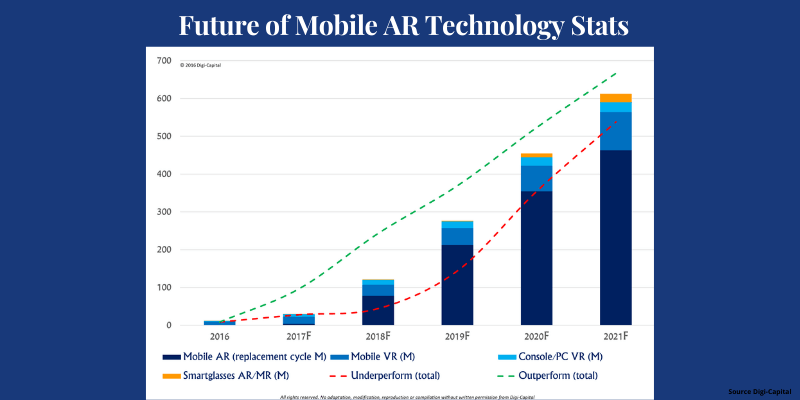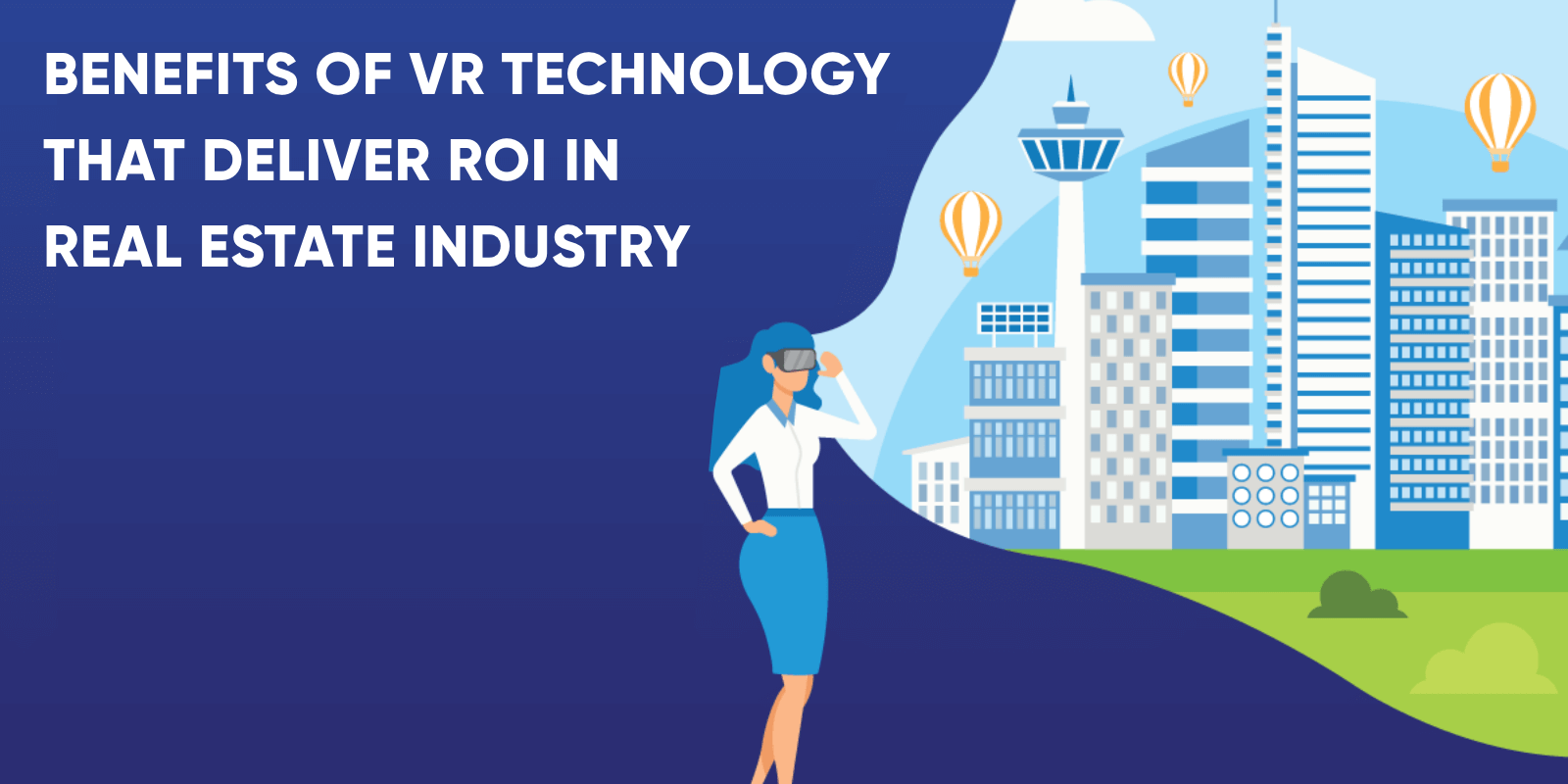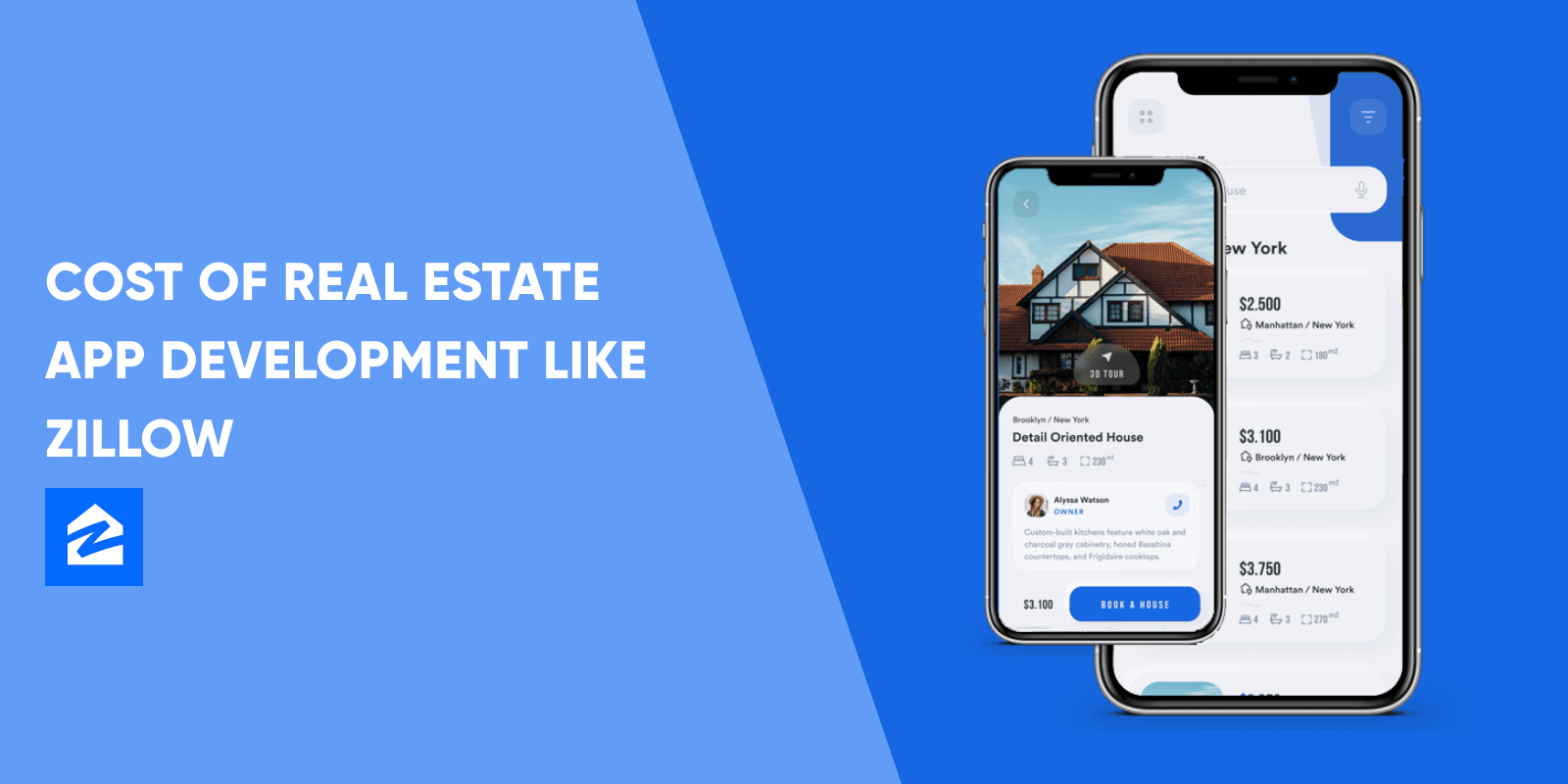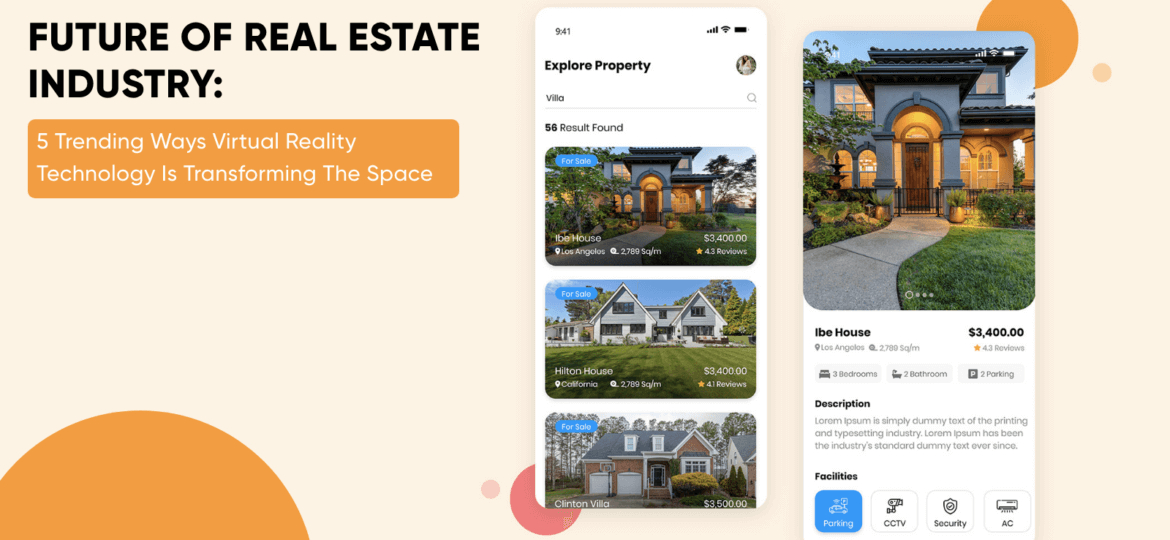How AR & VR Are Revolutionizing Real Estate in 2025
In 2025, augmented reality (AR) and virtual reality (VR) are reshaping the real estate industry by offering immersive mobile-first experiences that captivate audiences across Android and iOS apps. These technologies deliver real-time property tours, staging, and collaboration, meeting Google’s E‑E‑A‑T guidelines—demonstrating actual user feedback, expert development, authoritative technology use, and trustworthy security.
Immersive Virtual Property Tours
Modern real estate mobile apps heavily feature VR-powered virtual tours, allowing prospective buyers to navigate 3D model homes, explore layouts, and visualize spaces without needing physical visits. According to Goldman Sachs, AR/VR in real estate is projected to hit $80 billion by 2025 These virtual walkthroughs often report increased listing engagement—listings with VR tours receive up to 87% more views.
Digital Staging Through AR
AR-powered staging overlays furnishings, décor, and finishes onto live camera views in real estate apps, enabling users to visualize how a space could look post-renovation. This cost-effective strategy replaces physical staging and enhances buying confidence, making it a staple for modern interior-decision apps.
Live Remote Collaboration
Leveraging AR/VR, realtors, buyers, and architects can remotely tour properties as if together in person. Shared VR experiences or AR overlays on-site help stakeholders make design choices and inspect conditions—streamlining decision-making and reducing logistical bottlenecks.
Enhanced Marketing & Lead Generation
AR/VR tools help real estate professionals create engaging campaigns through interactive 3D tours, virtual open houses, and immersive property showcases. These immersive experiences not only draw tech-savvy buyers but also improve conversion rates and lead quality.
Streamlined Transactions & Analysis
The adoption of AR/VR reduces physical site visits and accelerates paperwork by integrating digital walkthroughs with in-app document signing. Advanced platforms are now pulling AI analytics into AR/VR models—such as predictive valuations, spatial data overlays, and live feedback—to support smarter decisions.
Trending Tech in Real Estate Mobility for 2025
Mobile-First AR/VR Apps: Real estate apps across Android and iOS now include PiP panoramic views, gesture navigation, and offline 3D caching.
Edge Computing & 5G Adoption: Fast streaming and real-time geospatial overlays empower live AR tours globally.
AI-Powered VR Tours: Automated virtual showings (e.g., DIGITOUR) cut production time and accelerate interactive walkthroughs.
BIM Integration: Merging AR/VR experiences with BIM enables construction-quality assurance.
Accessory Ecosystem: Platforms now support Apple Vision Pro and other XR headsets for enhanced viewing experiences.
Why AR/VR is Becoming Essential in 2025
Better Decision-Making: Immersive tours reveal spatial layouts and finishes, boosting buyer confidence and reducing returns.
Time & Cost Efficiency: Virtual previews minimize unnecessary real-world visits and staging budgets.
Broader Reach: Remote virtual tours enable global buyer access and continuous open house experiences.
Brand Authority & Trust: High-fidelity AR/VR features underscore a brand’s expertise and technical leadership.
Data-Driven Insights: Analytics from interactive tours inform strategic pricing and staging decisions.
Building a Future-Ready AR/VR Real Estate App
To create an exceptional Android app or iOS app for real estate today, focus on:
High-fidelity 3D & immersive UI: Use Unity or Unreal Engine and support 4K media.
Cross-platform consistency: Lightweight PWAs for web and complementary native experiences.
Privacy & security: Encrypted data, secure authentication, and transparent consent build user trust (E‑E‑A‑T).
AI and BIM integration: Automate tour creation and valuation processes using AI and BIM data.
Analytics dashboards: In-app user behavior tracking to optimize funnel conversion and performance.
Final Takeaway
AR and VR are transforming the real estate landscape by enabling immersive virtual tours, digital staging, remote collaboration, and data-driven decision-making—all within mobile-first Android and iOS apps. By integrating edge/cloud infrastructure, AI, BIM support, and secure UX, businesses can deliver an engaging, authoritative, and highly functional real estate experience in 2025. Embracing these technologies isn’t optional—it’s essential for any brand aiming to dominate the U.S. housing market with confidence, trust, and innovation.
AR (Augmented Reality) and VR (Virtual Reality) are gaining success in almost every industry you can think of. It is predicted that AR and VR will have an $80 billion market by 2025 according to the research. The Real Estate industry is keeping pace with the advancement in technology and is no more lagging behind.
The way people buy real estate properties these days is transforming due to the changing technologies. These technologies are used by approximately 90% of the real estate industries to deliver better services to their clients. Nowadays, modern technology is used everywhere be it virtual presentation of the properties or architectural representation of the space.
With digitization and technological advancements, things have become possible and easier for humans. As we all know, modern technology is used worldwide and the real industry has adapted itself well to this technology and is no exception.
The process of buying, selling, and managing properties have become more advanced due to the latest innovations in AR and VR. So, if you are interested in knowing the facts behind how AR and VR technologies are reshaping Real Estate, stay tuned with this article.
In this article, we will be covering parameters such as stats, benefits, trending ways how AR and VR are changing the real estate industry.
Facts About AR & VR Technology

In this era of advanced technology, the real estate industry is rapidly changing. Innovations in technology and enhanced interconnectivity have a major impact on how buyers search properties and explore them. Due to advancements in AR (Augmented Reality) and VR (Virtual Reality) technologies, the life of real estate professionals has become much easier. These technologies have helped them in saving time speeding up the buying process.
Let’s have a look at some stats that show how VR and AR are increase businesses in general:
VR Technology Benefits That Deliver ROI In Real Estate Industry

Cost-Effective
Time Saver
It saves time for both agents as we as clients. You can use this technology to view your property virtually from any place. It will save a lot of time that you might waste because of traffic jams, unknown locations, and sometimes you have busy work schedules too. Using this, a realtor can reach out to global-based customers and expand their audience.
Also Read:
Enhanced Client Engagement
In-depth Analytics
A realtor can know the analytics using this technology from the virtual tour that the client does. The key insights show proper bifurcation of user behavior and preferences. In the end, it will help in future improvements and customer requirements.
5 Trending Ways AR And VR Technology Is Transforming The Real Estate Industry

Virtual Commerce
After the virtual tour, you can enable customers to make changes to the interior. By building an online store, you can provide your customers easy access to the items presented in virtual staging. With the help of an experienced VR app developer, you can boost the profits that you make online and can also enhance the customer satisfaction that will result in virtual reality in a virtual estate.
Architectural Representation of the Space
Creating a VR app for your business offers you many opportunities which will ultimately lead you towards success. It allows you to make properties that do not exist. If we talk about earlier times, it was a very risky business for realtors to sell an imaginable property. With the arrival of AR/VR, the properties that were not built yet can be made with their infrastructures, interiors, and architectures. It becomes easy for a buyer to select land with suitable surroundings.
Interactive VR Software for Property Display
You can let your customers have a wonderful experience by providing them a tour of the space. Such 3D tours are bliss, you need not look for suitable space from one locality to another. Using these standard videos the visits are interactive. Such videos will be 360- degree capturing or can be fully virtual. The way these are designed helps the customer to easily move across the property by just clicking on a specific spot. VR software provides an amazing user experience and also enables them to make quick decisions.
Staging a Property with AR/VR
As we all know, a more furnished house is easier to sell as compared to an unfurnished one. When we have to purchase a house or a working space for ourselves, we get very particular and selective. We prefer having a good aesthetic and interior design. AR/VR provides us the best help for it. AR helps you to design property with furniture and required facilities.
AR/VR Apps
AR/VR app development also comes with very good customization in addition to all the previously mentioned functionalities. Real estate applications are of immense help for the realtor, as it helps them to perform multiple tasks simultaneously and run the business smoothly. Therefore, the implementation of such technology will attract more users and that will turn out to be a benefit for your business.
What Is The Cost Of Real Estate App Development Like Zillow?

There are multiple factors that we count for real estate development costs. To know the general estimate of the costs we will have to look into the main stages of app development. Estimates are based on rates of $ 25.335 per hour.
Web Development
A customized panel for administrators is created during this stage of web development. Approximately 300 hours are taken up for it and it would cost you around $8271.
Native Development
At this stage, you are thinking about building an app for Android or iOS, or both platforms. Before you start with native development, there will be other steps too such as exploring marketing insights and crafting realtor mobile app designs. Time consumed during this stage is 900 hours and would cost you somewhere around $24,813.
UX/UI Design
This stage is very essential to provide a smooth user experience. Using a unique UI/UX design will help you to create a flexible user experience that will ultimately enhance the performance of real estate mobile applications. The time needed for this stage is 200 hours and will cost you around $5514.
Testing And Quality Assurance
It is very important to test your application before you decide to launch it so that you can eliminate all the bugs. So to make sure about the quality, it would consume around 200 hours that will cost you approximately $5514.
Project Management
In-Conclusion
AR/VR technologies are transforming with time. Technological advancements in AR and VR are having a huge impact on the real estate industry. If you are looking forward to providing your customers with the best realtor experience then you need to improve your marketing tactics.
The success or failure of your real estate investment is determined based on AR / VR technologies. If you are looking to integrate AR/VR technology in your real estate business, it is high time to take your business to a whole new level.
FAQs
How do you choose a reputable real estate software or App development team?
You need to choose a software development company with expertise and skills in the industry. This is specifically important as selecting a reputable real estate software development company entails selecting a company that collaborates with you and tailors the software to your exact requirements.
How long does it take to develop a custom real estate app or software?
The time taken to develop a custom real estate app or software can vary for several reasons. It might take 2-4 months for a simple solution whereas six months is the ideal time to produce a completely fine-tuned product.



